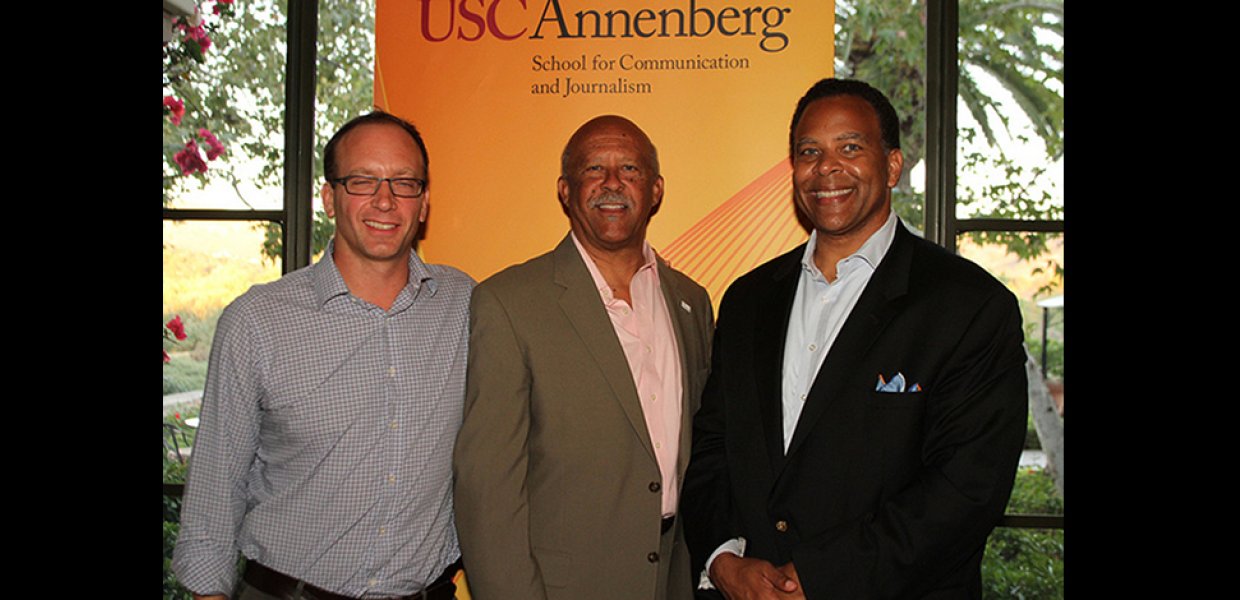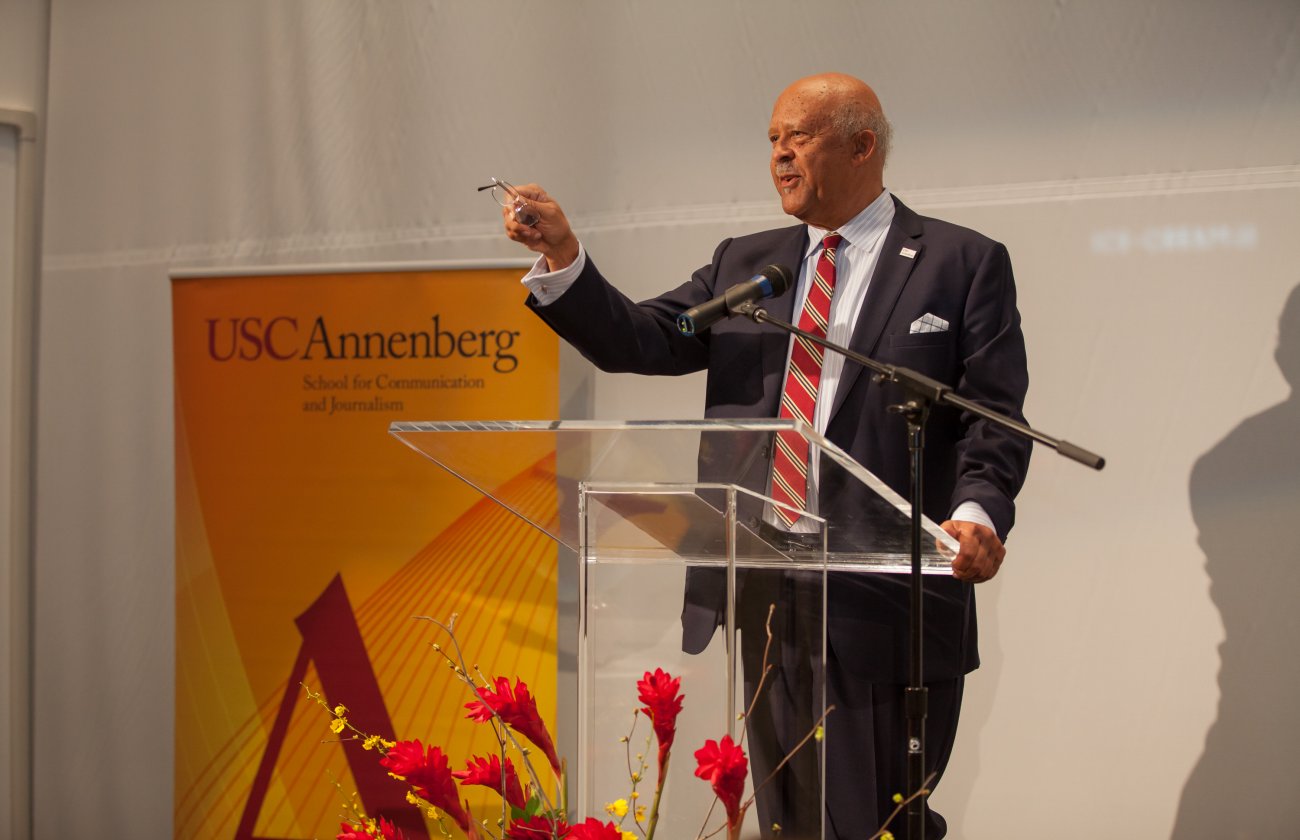Minor Key is a recurring look at one of the USC Annenberg School for Communication and Journalism's many undergraduate minors.
In fall 2010, USC Annenberg Professor Paolo Sigismondi’s COMM 207: Economic Thinking for Communication and Journalism was offered for the first time, allowing students to examine media industries through an economic lens. Annenberg Professor Gabriel Kahn recalls that at the time there was growing concern that students pursuing media careers had limited understandings of their chosen fields as businesses.
“The entire communication industry is being transformed rapidly and there was nothing here to contextualize the economic tectonic shift that’s taking place,” Kahn said.
With that gap in mind, Kahn and Annenberg Professor Chris Smith developed an interdisciplinary program called Media, Economics and Entrepreneurship (M{2E}), which offered courses aimed at giving students what Kahn calls “wherewithal in how these [fields] are changing: what the challenges and opportunities are, what [students’] role in that is and the economic forces behind it.” Though the classes were giving students an invaluable understanding of the media landscape, they didn’t produce a credential, which is where the brand new M{2E} minor comes in. The minor is a partnership between Annenberg and USC Marshall’s Lloyd Greif Center for Entrepreneurial Studies. As such, the introductory courses for the minor include two business courses (BAEP 450 and BAEP 451) and two communication courses (COMM 207 and COMM 208). The minor also offers numerous other unique courses designed to give students “business acumen specific to [media] industries.”
“Essentially, it’s a new way of packaging the curriculum that we’ve developed here over the last couple of years,” Kahn said.
Smith added that the curriculum as a whole aims to “give students a mindset for appreciating the characteristics of an age of innovation like we’re in now.” Kahn’s JOUR 469: Money, Markets and Media gives students who want to work in the media the technical vocabulary needed to talk about media business without having to take an introductory economics class. “Everything is an economic issue, whether you want to cover sports, entertainment, the environment, whatever it is,” Kahn said. “So, this is a way to increase economic literacy among journalism students, and communication students who come for the same reason.”
In the spring, a course called “Monetization of the New Media” will be offered for the third time. The course looks at how we value media assets and content against the backdrop of changing distribution models. “It’s very exciting because there are a lot of new opportunities to explore in terms of finding new revenue streams, but it’s also one of tremendous churn, lots of trial and error,” Kahn said. What was once known as the television industry is now known as simply the video industry, which is what Smith will examine with students in COMM 432: American Media and Entertainment Industries. The M{2E} minor is available to all USC students, including those majoring in Communication so long as they take primarily business and journalism courses from the curriculum. Although Joann Park graduated from the School of Communication in May, she nearly every M{2E} course while at Annenberg and would have likely been a minor had it been offered. “My understanding of how media and money connect definitely set me apart when I was applying for internships or jobs,” Park said. She is now working in the strategy department at Viacom and said that the majority of her co-workers have a finance or business background, so M{2E} was instrumental in preparing her for the position.
Overall, Smith argues that all students will benefit from the minor tracks industrial shifts taking place “across the industries represented by our entire school.”
“What makes Annenberg unique is that you can get an appreciation for the full spectrum of how these constitutive elements of the media business, the information business, add up together,” Smith said.









